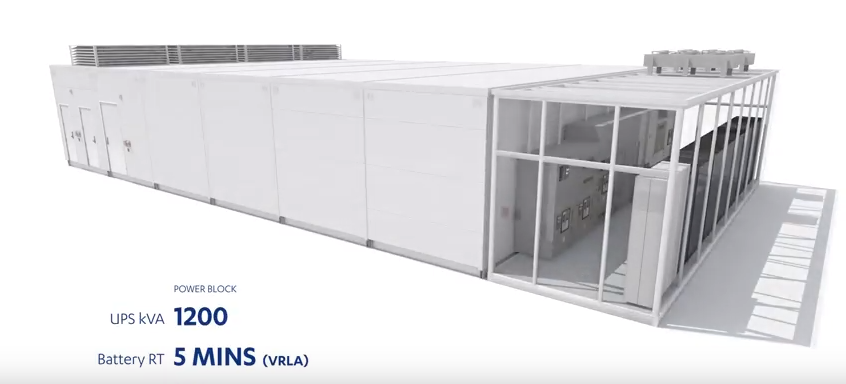Imagine It, Build It: A Lego-Inspired Approach to Data Center Design

BASELAYER CEO William Slessman and Puget Sound Energy’s Christopher Perez recently had an intriguing discussion at DCD NY, showcasing how a modular approach to data center design is changing the data center landscape.
William and his team wanted to find a data center solution that was more efficient than traditional stick-built facilities that would allow for both better time and capital management. One evening as William watched his youngest son build an intricate model with Legos, he thought, “How nice would it be if we could just drop a Lego block in the warehouse? You’d have a data center space ready to go!”. William realized that this concept of doing all the pre-work before could merit both time and dollar savings.
From Actual Legos to a Lego-Inspired Solution
The BASELAYER team brainstormed and realized that by building various pieces of a data center to be interchangeable and pre-integrated together, and then dropping these sections into locations either inside or out, the efficiency of the data center space could be improved drastically.
“As an infrastructure provider,” William said, “<this concept> also dramatically changed the outcome of the business. It changed our cost of goods sold. We had unbelievable energy efficiency with the ability to control the technology that was going in and out of it.”
A Simple to Deploy Solution
The trick is really looking at the requirement of where and what is needed, understanding the strategy and what the long-term initiatives are for the data center. The question of what applications are being used in the DC is the most important part to determining whether a stick-build or modular data center is the right option.”
With an ultimate goal to making the modular data center uncomplicated and efficient, BASELAYER asked, “How can we deploy as fast as possible, as simple as possible, and also deploy while other modules are still running?”
From Version One to Edge
The edge of network infrastructure is well-served by a module approach. Modules are quickly deployed and very versatile, allowing the integration of several centers across a wide geographic area versus one-off large installations. The Lego-inspired solution allows a site owner to configure blocks of data center capacity, however they may want, from seven cabinets to multi-megawatts, depending on requirements.
To learn more about how BASELAYER is reshaping performance in the data center through advanced modular technology, infrastructure management software, and big data analytics, check out the “Lego video” on YouTube.





